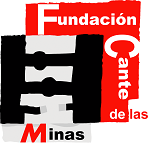El flamenco escénico y la división sexual del trabajo. Estudio estadístico de la Bienal de Sevilla, 2014
Abstract
The article analyses of the representation of men and women in the casts of the Bienal de Flamenco 2014 and its comparison to three other data sources from the late nineteenth century up to the early twenty-first century. The evidences of patterns and trends studied reveal the continuity of a sexual division and a heavily male-dominated job market, both in the arts and among technical professionals of flamenco.The essential characteristics of the lower margin of the occupation of women, and even their practical exclusion of certain tasks of flamenco, are described through charts and graphs. The article provides statistical data about the distribution of flamenco artists and flamenco technicians, differences between census offers and performing demands, sex distribution of the interpretative subgenres (singing, dancing, guitar-playing, vocals, palms and rhythm, percussion and other instrumentation), performing hierarchies (holders, secondary or special guests and collaborators), and four other technical fields of direction, creation, additional technics, and production.
Downloads
-
Abstract516
-
PDF (Español (España))425
Las obras que se publican en esta revista están sujetas a los siguientes términos:
1. El Servicio de Publicaciones de la Universidad de Murcia (la editorial) conserva los derechos patrimoniales (copyright) de las obras publicadas, y favorece y permite la reutilización de las mismas bajo la licencia de uso indicada en el punto 2.
2. Las obras se publican en la edición electrónica de la revista bajo una licencia Creative Commons Reconocimiento-NoComercial-SinObraDerivada 3.0 España (texto legal). Se pueden copiar, usar, difundir, transmitir y exponer públicamente, siempre que: i) se cite la autoría y la fuente original de su publicación (revista, editorial y URL de la obra); ii) no se usen para fines comerciales; iii) se mencione la existencia y especificaciones de esta licencia de uso.
3. Condiciones de auto-archivo. Se permite y se anima a los autores a difundir electrónicamente las versiones pre-print (versión antes de ser evaluada) y/o post-print (versión evaluada y aceptada para su publicación) de sus obras antes de su publicación, ya que favorece su circulación y difusión más temprana y con ello un posible aumento en su citación y alcance entre la comunidad académica. Color RoMEO: verde.









